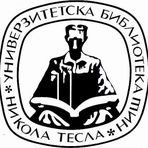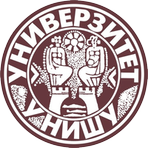Title
Komparativna analiza lečenja komplikovanih rana ekstremiteta kod dece metodom negativnog pritiska i vlažnog previjanja
Creator
Slavković, Milan, 1990-
CONOR:
110202377
Copyright date
2023
Object Links
Select license
Autorstvo-Nekomercijalno-Bez prerade 3.0 Srbija (CC BY-NC-ND 3.0)
License description
Dozvoljavate samo preuzimanje i distribuciju dela, ako/dok se pravilno naznačava ime autora, bez ikakvih promena dela i bez prava komercijalnog korišćenja dela. Ova licenca je najstroža CC licenca. Osnovni opis Licence: http://creativecommons.org/licenses/by-nc-nd/3.0/rs/deed.sr_LATN. Sadržaj ugovora u celini: http://creativecommons.org/licenses/by-nc-nd/3.0/rs/legalcode.sr-Latn
Language
Serbian
Cobiss-ID
Theses Type
Doktorska disertacija
description
Datum odbrane: 16.10.2023.
Other responsibilities
Alternative title
ǂА ǂcomparative analysis of the treatment of complicated extremity wounds in children using the methods of negative pressure wound therapy and wet-to-moist dressing
Publisher
[M. A. Slavković]
Format
147 listova
description
Biografija autora: list 147.
Bibliografija: listovi 133-146.
description
Surgery
Abstract (en)
The treatment of complicated wounds is complex, especially in
children's age, due to the psychological, psychological, and
physiological peculiarities of the child's organism. The traditional
method of treatment - wet-to-moist dressing (WTM), which involves
daily dressing, is difficult for children to tolerate, so general
anesthesia is necessary for these procedures. The need to achieve
faster wound healing, with as few painful procedures as possible, with
early mobilization and shorter hospitalization, requires the use of
different treatment methods. One such method is the negative
pressure wound therapy NPWT. Bearing in mind the paucity of
published data on the effectiveness and safety of the use of NPWT in
the treatment of complicated wounds in children, and the lack of
comparison of its results with the classic method, a prospective study
was conducted that included 58 patients aged younger than 18 years,
treated for complicated extremity wounds. There were 34 patients in
the study group who were treated with NPWT, and 24 patients in the
control group, who were treated with WTM. According to the wound
score, the wounds were more severe in the study group. The number
of dressings changes was higher in the control group in which the
length of hospitalization was shorter. During the NPWT a significant
decrease in inflammation parameters was recorded in the study group.
The OSAS scar score was better in the study group. The number of
complications was the same in both groups. Negative pressure wound
therapy is more effective in the treatment of complicated wounds in
children, because it was applied to more difficult complicated
wounds, definitive wound coverage was possible with a simpler
technique, a better scar score was achieved and the number of
conversions from WTM to NPWT was high.
Authors Key words
komplikovane rane, terapija negativnim pritiskom, metoda
vlažnog previjanja, pedijatrijska populacija, otvoreni prelom,
infekcija rane
Authors Key words
complicated wounds, negative pressure wound therapy, wet to moist
dressing, pediatric population, open fractures, wound infection
Classification
616-001-08-053.2(043.3)
Subject
B600
Type
Tekst
Abstract (en)
The treatment of complicated wounds is complex, especially in
children's age, due to the psychological, psychological, and
physiological peculiarities of the child's organism. The traditional
method of treatment - wet-to-moist dressing (WTM), which involves
daily dressing, is difficult for children to tolerate, so general
anesthesia is necessary for these procedures. The need to achieve
faster wound healing, with as few painful procedures as possible, with
early mobilization and shorter hospitalization, requires the use of
different treatment methods. One such method is the negative
pressure wound therapy NPWT. Bearing in mind the paucity of
published data on the effectiveness and safety of the use of NPWT in
the treatment of complicated wounds in children, and the lack of
comparison of its results with the classic method, a prospective study
was conducted that included 58 patients aged younger than 18 years,
treated for complicated extremity wounds. There were 34 patients in
the study group who were treated with NPWT, and 24 patients in the
control group, who were treated with WTM. According to the wound
score, the wounds were more severe in the study group. The number
of dressings changes was higher in the control group in which the
length of hospitalization was shorter. During the NPWT a significant
decrease in inflammation parameters was recorded in the study group.
The OSAS scar score was better in the study group. The number of
complications was the same in both groups. Negative pressure wound
therapy is more effective in the treatment of complicated wounds in
children, because it was applied to more difficult complicated
wounds, definitive wound coverage was possible with a simpler
technique, a better scar score was achieved and the number of
conversions from WTM to NPWT was high.
“Data exchange” service offers individual users metadata transfer in several different formats. Citation formats are offered for transfers in texts as for the transfer into internet pages. Citation formats include permanent links that guarantee access to cited sources. For use are commonly structured metadata schemes : Dublin Core xml and ETUB-MS xml, local adaptation of international ETD-MS scheme intended for use in academic documents.


